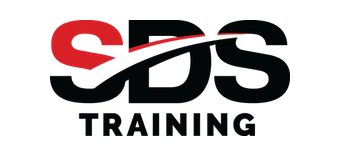The Impact of Rising Interest Rates on the Job Market
In today’s dynamic economic environment, interest rates wield significant influence over the financial decisions of individuals, businesses, and governments. As interest rates climb, the cost of borrowing escalates, triggering a ripple effect across various sectors of the economy, including the job market.
Exploring the Key Topics:
- Crucial Factors Influencing Interest Rates
- Impacts of Low and High Interest Rates
- The Ripple Effect of Increasing Interest Rates on the Job Market
- Industry Ramifications: The Impact of Escalating Interest Rates
- Drawing Lessons from the Past: Examining Case Studies and Contrasts
- Strategic Planning and Interest Rate Forecasting: A Vital Approach
- Job Seekers and Employers: Navigating High-Interest-Rate Challenges
- Navigating Change: Strategies for Job Seekers
- Navigating the Challenge: Effective Strategies for Employers
- Looking towards the Future: Anticipating Trends and Forecasts
UNVEILING THE MYSTERIES OF INTEREST RATES: FROM FUNDAMENTALS TO ADVANCED CONCEPTS
Interest rates are pivotal in determining an economy's overall well-being, wage growth, and stability. Essentially representing the price of borrowing money, interest rates are expressed as a percentage of the principal amount. Multiple factors, such as market dynamics, central bank monetary policies, and the general economic condition, contribute to the determination of interest rates.
By understanding the patterns associated with interest rates, we can effectively predict and navigate their impacts on the job market.
CRUCIAL FACTORS INFLUENCING INTEREST RATES
Market Forces: Fluctuations in the supply and demand for credit can sway interest rates. When the demand for loans surges, lenders may raise interest rates to capitalize on the heightened borrowing activity. Conversely, in times of low credit demand, lenders might reduce rates to stimulate borrowing.
Monetary Policies: Central banks wield considerable influence in setting interest rates. Through the implementation of monetary policies, central banks adjust the target interest rate to achieve specific economic objectives, such as managing inflation or fostering economic growth.
Economic Well-being: The overall health of the economy plays a crucial role in shaping interest rates. A robust economy characterized by low unemployment rates and robust consumer spending may result in higher interest rates, whereas an economy in a downturn may witness lower interest rates to stimulate economic activity.
Historically, interest rates have exhibited cyclical trends, with low rates typically aligning with economic expansions and higher rates correlating with economic slowdowns. Understanding these trends enables us to anticipate and address the implications of rising interest rates on the job market.
Impact of Low and High-Interest Rates
Low-Interest Rates: During periods of economic upturn, central banks may uphold low-interest rates to foster borrowing and investment. This stimulates business growth, consumer spending, and job creation, fostering a vibrant job market.
High-Interest Rates: In times of economic downturn or contraction, central banks may raise interest rates to combat inflation and stabilize the economy. Elevated interest rates raise the cost of borrowing, dampening business investment, curbing consumer spending, and ultimately impacting the job market negatively.
THE RIPPLE EFFECT OF INCREASING INTEREST RATES ON THE JOB MARKET
With the rise in borrowing costs, businesses are confronted with heightened expenses and restricted access to capital for their growth and investment endeavors. This can have a disproportionate impact on small businesses and startups, which heavily rely on loans to sustain their operations.
Consequently, companies may exercise caution in their hiring practices, leading to delayed recruitment and a slowdown in job creation. This cautious approach can further diminish business confidence as organizations navigate the delicate balance between escalating costs and the necessity to retain a skilled workforce.
INDUSTRY RAMIFICATIONS: THE IMPACT OF ESCALATING INTEREST RATES
Certain industries are particularly vulnerable to the consequences of increasing interest rates, especially those heavily dependent on consumer spending. For instance, the housing and real estate sector may experience a decline as higher mortgage rates dissuade potential homebuyers and dampen consumer demand for construction and related jobs.
Likewise, consumer-driven sectors like retail and hospitality may suffer from reduced spending, potentially resulting in a contraction of employment opportunities.
The effects of rising interest rates vary across different industries. While some sectors are more sensitive to fluctuations in interest rates affecting job market dynamics, others remain relatively stable.
Industries that are highly leveraged or heavily reliant on borrowed capital for growth are likely to be negatively impacted by higher borrowing costs.
Construction and Real Estate: These sectors are significantly influenced by rising interest rates, as they rely on loans to facilitate projects and purchases. The increased borrowing costs can lead to a decrease in demand for new construction projects and lower property values, ultimately resulting in job losses and a slowdown in these industries.
Automotive: The automotive industry heavily relies on consumer financing for vehicle purchases. As interest rates rise, the cost of auto loans increases, potentially deterring consumers from buying new cars. This reduced demand can lead to decreased production and job losses in the automotive sector.
Retail and Consumer Goods: These industries rely on consumer spending, which may decrease as borrowing costs rise. Consumers facing higher loan payments may cut back on discretionary spending, negatively impacting businesses in these sectors and potentially leading to job losses.
Small Businesses: Smaller businesses often struggle to secure loans when interest rates climb, due to their limited access to capital. This challenge in obtaining financing can hinder growth, impede expansion plans, and ultimately result in job losses.
Drawing Lessons from the Past: Examining Case Studies and Contrasts
Reflecting on past instances of escalating interest rates unveils the potential repercussions on the job market. Businesses have grappled with the challenges of surging borrowing costs, leading to job cuts and layoffs in impacted sectors. These real-life scenarios offer valuable lessons for policymakers and industry leaders, underscoring the need for proactive strategies to mitigate the negative effects of rising interest rates on employment growth.
Key learnings from these case studies include:
Industry Vulnerability: Certain sectors, like construction, real estate, and automotive, are particularly vulnerable to the adverse effects of increasing interest rates, given their reliance on borrowed funds for operations and expansion.
Adaptation Hurdles: Companies often face significant hurdles in adjusting their operational frameworks and strategies to navigate the higher borrowing costs, sometimes resulting in downsizing or restructuring efforts that impact job opportunities.
Importance of Readiness: The experiences of businesses during periods of rising interest rates highlight the importance of readiness and contingency planning to minimize disruptions to operations and workforce.
Comparative analysis of job openings in high versus low-interest rate environments also unveils intriguing trends. Employment growth tends to be more robust in low-interest-rate settings, as businesses enjoy enhanced access to capital for business expansion and job creation.
Strategic Planning and Interest Rate Forecasting: A Vital Approach
Recognizing the profound influence of interest rates on diverse industries and the current robust job market, it is imperative for businesses and policymakers to diligently track and predict interest rate trends. By proactively staying informed about potential fluctuations in interest rates, decision-makers can effectively prepare for the forthcoming challenges and opportunities.
Monitoring Economic Indicators: To foresee shifts in interest rates, businesses and policymakers should closely monitor key economic indicators like inflation, unemployment rates, and GDP growth. These crucial factors serve as early indicators of potential changes in the interest rate landscape.
Scenario Planning: Companies can engage in scenario planning to evaluate the potential effects of varying interest rate environments on their operations, finances, and workforce. This proactive approach enables them to develop contingency plans and adapt to evolving economic circumstances.
Risk Management: Understanding the risks associated with fluctuating interest rates empowers businesses to implement risk management strategies that mitigate adverse impacts on their operations. This may entail diversifying income streams, reducing debt exposure, or utilizing financial instruments like interest rate swaps or options to hedge against interest rate risks.
Proactive Policy Measures: Policymakers can take proactive measures to support industries and the job market during periods of rising interest rates. These initiatives may involve targeted fiscal policies such as tax incentives or public spending programs, as well as monetary policy adjustments to stabilize interest rates and foster economic growth.
JOB SEEKERS AND EMPLOYERS: NAVIGATING HIGH-INTEREST-RATE CHALLENGES
In a climate of elevated interest rates, job seekers and employers face the task of adapting to the evolving economic landscape. By prioritizing skill enhancement, broadening job search horizons, and implementing cost-effective measures, individuals and businesses can effectively maneuver through the complexities of the labor market and maintain resilience amidst uncertainty.
Navigating Change: Strategies for Job Seekers
In times of rising interest rates, job seekers can enhance their employment opportunities by adopting the following tactics:
Skill Enhancement: Recognizing the demand for specific skills and industries is imperative for job seekers aiming to enhance their employability. Engaging in upskilling initiatives and retraining programs equips individuals with the requisite proficiencies to stay competitive in the job market.
Diversifying Job Search Parameters: Expanding the scope of one's job search can unveil new opportunities. This may involve exploring different sectors, contemplating remote work options, or delving into freelance endeavors to increase the likelihood of securing suitable employment.
Networking and Personal Branding: Cultivating a robust professional network and establishing a strong personal brand can set job seekers apart in a competitive job landscape. Leveraging social media platforms, participating in industry events, and connecting with peers in the field can yield valuable contacts and potential job prospects.
Navigating the Challenge: Effective Strategies for Employers
In the face of rising interest rates, employers have a range of tactics at their disposal to navigate the changing economic landscape and ensure stability within their workforce:
1. Drive Cost Efficiency and Prioritize Productivity: By optimizing operations and cutting unnecessary expenses, companies can bolster profitability in the midst of heightened borrowing costs. Focusing on efficiency and productivity improvements can lead to significant cost reductions and enhanced overall business performance.
2. Enhance Retention and Talent Management: Implementing initiatives to boost employee engagement and adopting effective talent management strategies are crucial for retaining valuable staff members and sustaining productivity during times of economic uncertainty. This may involve offering flexible work arrangements, investing in professional development opportunities, and fostering a positive workplace culture.
3. Strategic Workforce Planning: Proactive planning for future staffing needs enables employers to mitigate the impact of fluctuating interest rates on their operations. By assessing different interest rate scenarios and adjusting hiring strategies accordingly, businesses can better position themselves for success in a dynamic economic environment.
PEERING INTO THE FUTURE: FORESEEING TRENDS AND PREDICTIONS
While accurately predicting the exact path of interest rates presents a challenge, insights from experts and economic indicators offer valuable perspectives on potential trends and their impact on the job market. Understanding the long-term implications for job market resilience and implementing proactive strategies for businesses and job seekers is crucial for preparing for forthcoming changes.
Thriving in environments with high-interest rates demands foresight, adaptability, and resilience from both job seekers and employers. By prioritizing skill enhancement, broadening job search horizons, and implementing efficient cost-saving measures, individuals and businesses can effectively navigate these challenging conditions and maintain stability in an ever-changing economic landscape.
LOOKING TO THE FUTURE: FORECASTING AHEAD
As we look ahead, it's clear that interest rates play a crucial role in shaping the job market and impacting various industries. To stay ahead of the game, businesses and policymakers need to closely monitor key economic indicators like inflation, unemployment rates, and GDP growth.
In order to navigate the potential impacts of different interest rate environments, companies can benefit from engaging in scenario planning and implementing risk management strategies to safeguard their operations.
For job seekers, focusing on skill development, expanding job search horizons, networking, and building a strong personal brand are essential steps. Employers, on the other hand, should prioritize cost optimization measures and initiatives for talent retention and management to thrive in high-interest-rate environments.
With insights from the central bank's long-term outlooks, expert opinions, and valuable economic indicators, individuals and businesses can make informed decisions to prepare themselves for the challenges and opportunities that lie ahead.

.jpg?width=188&height=104&name=sds-logo-rto(2).jpg)
.png?width=823&height=690&name=Interest%20Rate%20Rises%20Impact%20on%20the%20Job%20Market%20(1).png)

.png?width=783&height=656&name=Ripple%20effect%20increasing%20interest%20rates%20On%20the%20Job%20Market%20(1).png)











